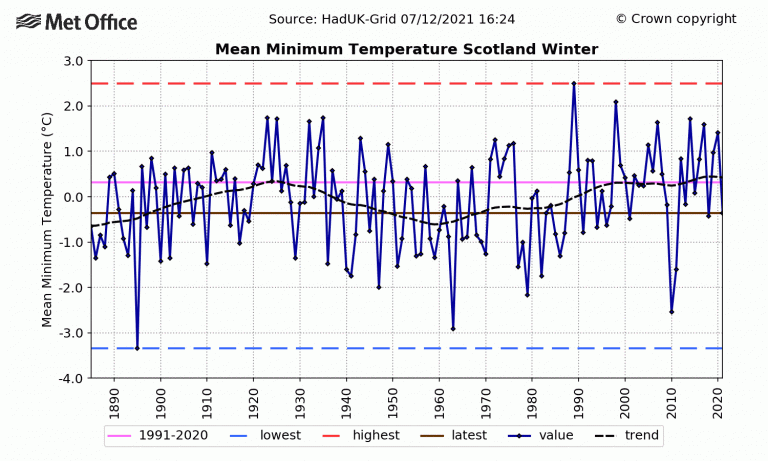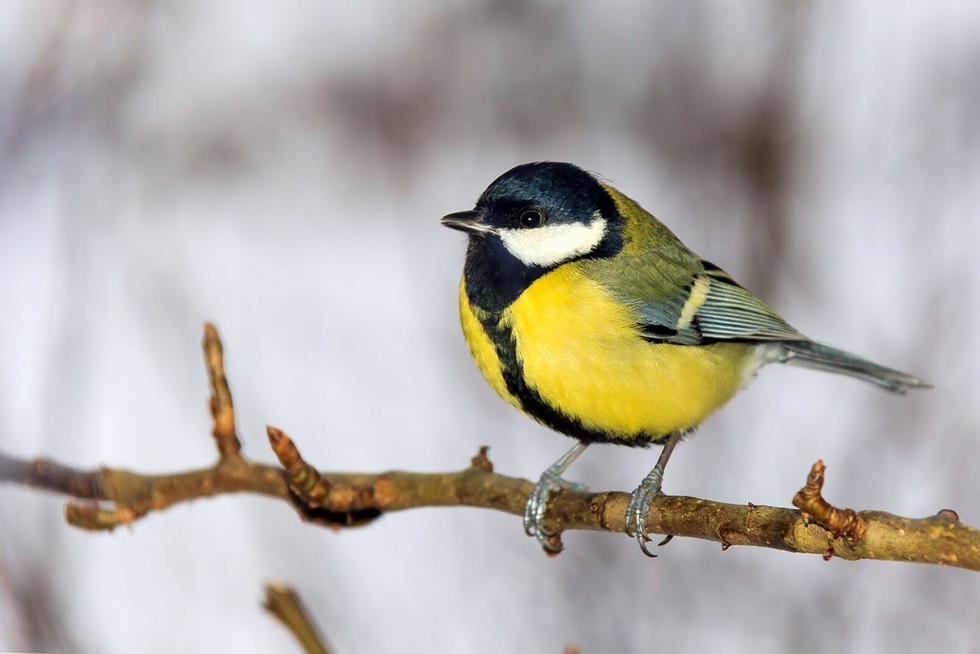Once again, the BBC’s Springwatch has been drawing attention to the horrors of climate change, generating guilty fears which don’t really stand up to scrutiny.
On the second programme in the present series, Chris Packham presented research from Oxford University, a study that has been done on the great tits of Wytham Woods over 75 years – an excellent long term project, incidentally. It showed, he said, that although this spring has been warm, resulting in birds producing their clutches early, the tits have shown the consequences of climate change by nesting, on average, a whole month earlier than they did at the start of the study in 1947, in late March or early April, rather than late April. Co-anchor Michaela Strachan concluded the piece by saying, ruefully, something like, “Well, that proves it – you can’t argue with data.”
What she didn’t say was what it proved, and why it might matter. All we were actually told is that great tits in that study nest earlier than they did 75 years ago, and that it is warmer now than then, which nobody seriously disputes. But did the bird’s habits suddenly shift at some point, or was it a steady change in line with the increase in atmospheric CO2? And it would be good to know about the missing data before 1947, particularly in the hot 1930s, in the Little Ice Age, or in the Mediaeval Warm Period when Chaucer noted that,
Whan Aprille with his shoures sote
The droghte of Marche hath pierced to the rote…
And smale fowles maken melodye,
That slepen al the night with open yë…
Also, might it be that, like the swallows mentioned on Springwatch just beforehand, the birds benefit from an earlier start, and more time to mature before the winter cold sets in? Also unanswered, and unasked, was any question of whether mankind bears any responsibility for the phenomenon, and whether we can, or should, do a solitary thing about it.
I have a soft spot for the great tit, it being the only passerine I have dissected, when I was around 14 and found a dead one on the school sports field. So let’s look a bit deeper into its welfare.
Back in February I did a piece which included a graphic of Scottish winter temperatures, which is sufficiently similar to the general British temperature trend to reproduce rather than searching for an English Spring equivalent:

As you see, 1947 was about the time when dropping temperatures fell below average from a peak in the 1920s, reaching a cold point around 1960. The subsequent rise more or less leveled off in the mid 1990s. It remains to be seen whether in the future temperatures will rise more, or begin to revert to the mean. So all in all, if tit nesting correlates with temperature, we would predict a point comparison between now and 1949 to show what it does, but we would also expect that in the 1930s things were as they are now, and back in 1890, when the temperature record commences, clutches were produced as late as they were in 1960. If the data for that exists – and it would be important to the climate change issue if it did – then the Oxford study doesn’t have it, through no fault of its own.
We can check our predictions against the actual Oxford study, and though I haven’t accessed the dataset, a New Scientist article from 2008 bypasses the enthusings of David Attenborough of Oxford University’s recent press release and confirms the Springwatch story of a big transition, incidentally suggesting that not much has changed since then, which is confirmed by the researchers’ recent summary.
The first thing to note is that the New Scientist article states the beginning of the increase as 1961, rather than 1947, correlating exactly with our temperature graph, and strongly indicating a causal relationship. We should notice, though, that the researchers’ homepage points out that there are other factors, and that the data actually shows a variation from the earlier egg laying pattern of between only a week to a whole month:
However, our recent research has revealed that this shift in the timing in response to climate change varies considerably across the woodland with the slowest nesting sites only having advanced egg laying by 7.5 days, whilst the fastest sites advanced by 25.6 days. This variation is linked to the health of nearby oak trees – birds breeding in areas with healthy oaks have advanced their laying by 5.4 days more than those breeding in areas with unhealthy oaks.
This “noise” in the data would, I guess, make it quite difficult to correlate a clear trend or a leveling off as temperatures have reached a plateau, so maybe “warmer and earlier than 1960” is the most we can say from it. It certainly shows that Springwatch’s “a whole month earlier” is cherry-picking data, the average still being only 2 weeks, according to the researchers’ own page.
As for the tone of pessimism in the Springwatch piece, the New Scientist article actually majors on the fact that the change in temperature has been beneficial to the great tit population here, though not in the Netherlands. This suggests, actually, that nature is full of swings and roundabouts, even for the same species, though New Scientist gloomily suggests that British tits might go the way of the Dutch if temperatures continue to rise. Well they might, but they haven’t (tits are still doing well 14 years later and temperatures are not rising further).
Springwatch is quite deliberately a celebration of Britain’s nature, not Holland’s. So apart from the scientific interest of this study, continued over such a long period, it ought to be celebrating a good news story of a boom in the fortunes of some species owing to a more equable climate. But somehow it manages to turn it into bad news, and what is more, into a reason for self recrimination. It is our fault that great tits are doing so well – you can’t argue with the data (though you can spin it to show what you want or expect it to show).
What this study really shows is what many of us have been saying for a long time: Britain has gone tits up. Take that however you wish.

